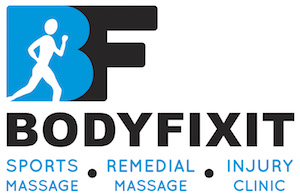Last week’s heatwave certainly gave us a taste of summer, and with more warm weather on the horizon, it’s the perfect time to revisit how we can all stay healthy and comfortable when temperatures rise. Extreme heat can be challenging for our bodies, so let’s explore some smart strategies for staying cool, exercising safely, and keeping calm when the mercury soars.

The Dangers of Extreme Heat and Staying Safe
Heatwaves can pose serious risks, especially for vulnerable individuals like children, older adults, pregnant women and those with chronic health conditions. However, everyone can be affected.
Here’s how to stay cool and safe:
- Avoid Peak Sun: Try to stay out of direct sunlight during the hottest parts of the day, typically between 11 AM and 3 PM. Seek shade whenever possible.
- Dress Appropriately: Wear loose-fitting, light-colored clothing made from breathable fabrics like cotton. Don’t forget a wide-brimmed hat and sunglasses to protect yourself from the sun’s rays.
- Sunscreen is Essential: Apply a broad-spectrum sunscreen with at least SPF 30, even on cloudy days, and reapply regularly if you’re outdoors.
- Cool Your Skin Actively: Drenching your clothes with cool water or taking a cool shower can provide immediate relief. A great trick is to submerge your forearms in cool water for a few minutes. This helps cool the blood circulating close to the surface, which then circulates through your body, helping to lower your core temperature.
- Stay Hydrated: Drink plenty of water throughout the day, even if you don’t feel thirsty. Avoid sugary drinks, excessive caffeine and alcohol, as these can contribute to dehydration.
Exercising in Hot Weather
While staying active is important, exercising in hot weather requires extra caution. Your body works harder to cool itself, increasing the risk of heat-related illnesses.
- Limit Physical Activity During Hottest Hours: If you must exercise, do so in the early morning or late evening when temperatures are cooler.
- Listen to Your Body: Pay close attention to how you feel. If you experience dizziness, nausea, headache, or excessive sweating, stop immediately and cool down.
- Understand Heat Exhaustion vs. Heatstroke:
- Heat Exhaustion Symptoms: Heavy sweating, cold/clammy skin, fast weak pulse, nausea/vomiting, muscle cramps, tiredness, headache, fainting. Move to a cool place, loosen clothing, sip water, apply cool cloths.
- Heatstroke Symptoms (Emergency!): High body temperature (103°F/40°C or higher), hot/red/dry or damp skin, strong fast pulse, confusion, dizziness, unconsciousness. Call 999/emergency services immediately. Move the person to a cooler place and begin cooling efforts.

Keeping Calm When the Heat Stresses You
For some, hot weather isn’t just uncomfortable – it can be genuinely stressful or trigger anxiety. If you find the heat makes you feel overwhelmed or agitated, remember to:
- Practice Deep Breathing: Simple breathing exercises can help calm your nervous system. Try inhaling slowly through your nose, holding for a few seconds, and exhaling slowly through your mouth.
- Create a “Cool Down” Routine: Dedicate specific times to cool down, whether it’s sitting in an air-conditioned room, taking a cold shower, or using cold compresses on your pulse points (wrists, neck, temples).
- Mindful Movement (Indoors): If outdoor exercise feels too much, gentle indoor activities like Pilates can still provide a release for physical and mental tension without overheating you. Focus on the controlled movements and your breath to promote a sense of calm.
- Connect with Nature: Even in the heat, finding ways to be in nature can be incredibly calming and cooling. Consider a gentle forest walk during cooler parts of the day – the shade of trees can significantly lower temperatures. Or, if accessible, swimming is a fantastic way to cool down while engaging in a full-body, low-impact exercise. Being in natural environments has been shown to reduce stress hormones like cortisol and increase feel-good hormones like oxytocin, promoting a sense of well-being and connection.

Sleeping Soundly in a Heatwave
Getting a good night’s sleep when it’s hot can be a real challenge, but quality rest is crucial for your overall health.
- Cool Down Your Room: Keep curtains or blinds closed during the day to block out sunlight. If you have air conditioning, use it! Otherwise, consider placing a bowl of ice in front of a fan to create a DIY cool breeze.
- Light Bedding: Swap heavy duvets for lightweight sheets or just a duvet cover.
- Cool Shower Before Bed: A lukewarm or cool shower right before you get into bed can help lower your body temperature, making it easier to drift off.
- Stay Hydrated (But Not Too Much!): Drink water throughout the evening, but avoid excessive amounts right before bed to prevent frequent trips to the bathroom.
- Dress for Sleep: Wear loose, cotton pajamas or sleep in minimal clothing.
By taking these proactive steps, you can enjoy the summer sunshine safely and keep your cool, no matter how high the temperatures climb. Stay hydrated, stay safe, and remember to listen to your body!

